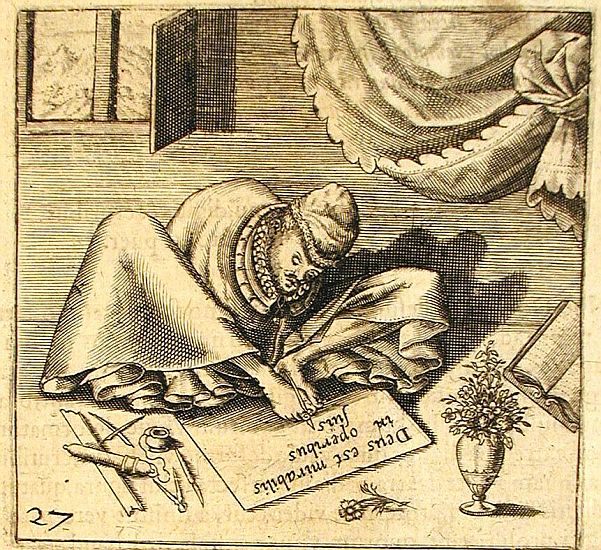Thomas Schweicker on:
[Wikipedia]
[Google]
[Amazon]
 Thomas Schweicker (December 21, 1540 – October 7, 1602) was a German
Thomas Schweicker (December 21, 1540 – October 7, 1602) was a German
 He was buried at St Michael's, where his Death Certificate, created by himself ten years before, along with a depiction of him at work, are still on display.
He was buried at St Michael's, where his Death Certificate, created by himself ten years before, along with a depiction of him at work, are still on display.
 Thomas Schweicker (December 21, 1540 – October 7, 1602) was a German
Thomas Schweicker (December 21, 1540 – October 7, 1602) was a German artist
An artist is a person engaged in an activity related to creating art, practicing the arts, or demonstrating an art. The common usage in both everyday speech and academic discourse refers to a practitioner in the visual arts only. However, th ...
and calligrapher
Calligraphy (from el, link=y, καλλιγραφία) is a visual art related to writing. It is the design and execution of lettering with a pen, ink brush, or other writing instrument. Contemporary calligraphic practice can be defined as "t ...
. He was noted for being a painter
Painting is the practice of applying paint, pigment, color or other medium to a solid surface (called the "matrix" or "support"). The medium is commonly applied to the base with a brush, but other implements, such as knives, sponges, and ai ...
even though he had no arms or hands.
Life
Schweicker was born inSchwäbisch Hall
Schwäbisch Hall (; "Swabian Hall"; from 1802 until 1934 and colloquially: ''Hall'' ) is a city in the German state of Baden-Württemberg located in the valley of the Kocher river, the longest tributary (together with its headwater Lein) of the ...
, to Hans and Dorothea Schweicker. His father was a baker and a councilor, and later a judge. Schweicker was the 6th of 8 children, and had four brothers and three sisters.
He was born without arms, presumably due to amniotic band syndrome
Constriction ring syndrome (CRS) is a congenital disorder with unknown cause. Because of the unknown cause there are many different, and sometimes incorrect names. It is a malformation due to intrauterine bands or rings that give deep grooves in, ...
. Nevertheless, he learned not only to master every day tasks like washing and dressing himself, but also to write, by using his feet.
By age seven, he began his schooling, and by age twelve, he was enrolled in the Schwäbisch Hall Latin school.
Calligraphy and celebrity status
Schweicker had a talent for calligraphy, and soon became adept at creating elaborate documents. This, combined with his ‘unusual’ technique soon made him a celebrity. Many visitors came to Schwäbisch Hall to see him, watch him work, and buy a piece of his art. In 1570, he met both Kaiser Maximilian II andPrince-elector
The prince-electors (german: Kurfürst pl. , cz, Kurfiřt, la, Princeps Elector), or electors for short, were the members of the electoral college that elected the emperor of the Holy Roman Empire.
From the 13th century onwards, the prince ...
August of Saxony, and impressed them with his work. In 1584 he was invited to come to Heidelberg
Heidelberg (; Palatine German language, Palatine German: ''Heidlberg'') is a city in the States of Germany, German state of Baden-Württemberg, situated on the river Neckar in south-west Germany. As of the 2016 census, its population was 159,914 ...
, to perform at court for audiences. Schweicker stayed there until 1598, working mainly as a painter.
Death
Schweicker died in the early morning hours of October 7, 1602 following a short illness. He was buried at St Michael's, where his Death Certificate, created by himself ten years before, along with a depiction of him at work, are still on display.
He was buried at St Michael's, where his Death Certificate, created by himself ten years before, along with a depiction of him at work, are still on display.
References
* 1540 births 1602 deaths German amputees People from Schwäbisch Hall People without hands Mouth and foot painting artists {{germany-artist-stub